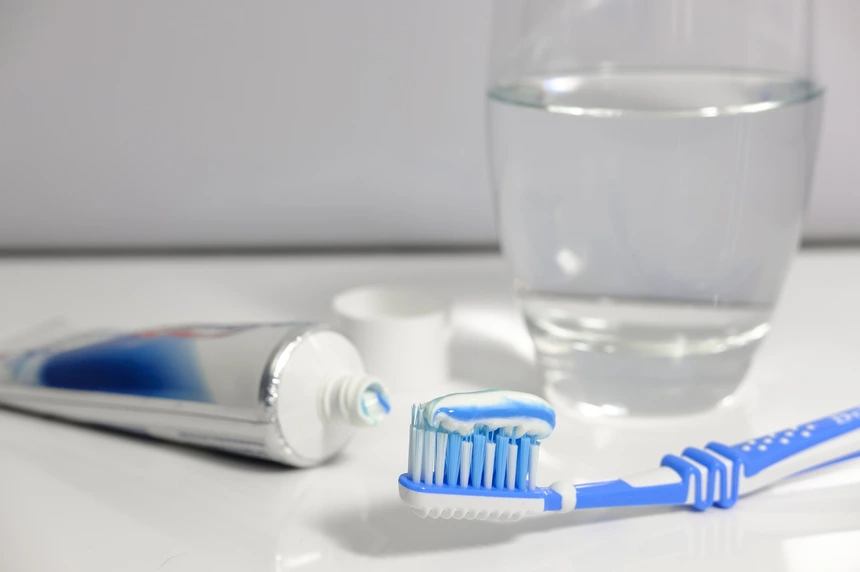What does Fluoride do to your Body
Since the accidental discovery in the early twentieth century of the fluoride effect in preventing the formation of cavities, dentistry has promoted its use as a public health practice. We find fluoride in dental hygiene products like toothpaste and mouthwash. But to give greater scope to the benefit of fluoride, a practice of fluoridation of drinking water was established in many cities around the world, and some places, it was even regulated that fluoride must be added to common salt for human consumption.
Fluoridation of the drinking water supply has been awarded as one of the top 10 public health achievements of the 20th century. However, all these efforts to extend fluoride consumption are the subject of great controversy today. But apart from these discussions, it is good that we know more about this element: How does it benefit us? What does fluoride do to your Body?
In this article, we will review the pros and cons of fluoride for our health.
Este artículo también está disponible en Español
How does fluoride work?
Fluoride is promoted as an element that strengthens tooth enamel, making it more resistant to cavities. Its use has been recommended for years in children and adults at increased risk of tooth decay, such as older people.
The mechanism of action of fluoride in our body is not fully known. Different hypotheses have been issued in works that support the preventive effect of fluoride against cavities, which are summarized below:
The action of fluoride on hydroxyapatite
Fluoride strengthens the outer surface of the tooth that we know as enamel, by replacing the hydroxyl ions in the hydroxyapatite of the enamel to form fluorine-hydroxyapatite or fluorapatite, which are more crystallized structures and resistant to the action of oral acids. This means that fluoride replaces the original structure in the enamel of the teeth with a new, more resistant structure.
Thanks to this property are that fluoride is considered to prevent the formation of cavities. A cavity occurs when the hard surface of the tooth becomes softer and softer until a small hole develops.
It is the minerals that give our teeth their hardness, especially in their outer layer known as enamel. Enamel is composed of 96% minerals and 4% protein and water. When oral acids attack the enamel of the teeth destroying their calcium and phosphate structure, dental demineralization occurs and cavities appear.
Action on plaque bacteria
Fluoride inhibits bacterial activity, affecting the formation of extracellular polysaccharides, necessary for the adhesion of plaque to the enamel. It also decreases the entry of carbohydrates into bacteria, reducing the formation of oral acids.
Although the mechanism of action is not fully known, it is understood that fluoride acts in decreasing the cryogenic potential of bacterial plaque.
Is fluoride an essential nutrient?
Fluoride is not an essential element for human growth and development, nor are most organisms in the environment. It is not found in any natural human metabolic pathway, so our bodies can grow and stay healthy without it.
The FDA (Food and Drug Administration) in the United States does not include fluoride in the list of essential nutrients considering that there is not enough justification for it. For its part, the European Commission, through the Scientific Committee on Health and Environmental Risks, declares that fluoride is not an essential element for human growth and development.
However, fluoride is considered beneficial in preventing tooth decay. Given this, public policies and commercial products with fluoride content have been developed to address this problem that affects a large portion of the population.
Intentional fluoridation of drinking water, the development of oral care products containing fluoride, fluoridation of foods such as common salt, and supplements in tablets, have been employed since the early twentieth century in various parts of the world, as a public health measures to protect against tooth decay.
What are the side effects of fluoride?
Fluoride is an element that accumulates in our body and is biologically very active, even in small amounts, because it interferes with hydrogen bonds and inhibits the functioning of numerous enzymes.
Through the kidneys, our detoxifying system eliminates only 50% of the fluoride we ingest daily. The rest accumulates in the teeth and bones, in the pineal gland, and other tissues.
The following are the most important side effects that fluoride can cause when it accumulates in our bodies:
Dental fluorosis
Dental fluorosis is an irreversible condition caused by excessive ingestion of fluoride during the period of tooth formation, usually from birth to 6 to 8 years.
Excessively high levels of fluoride affect the proper functioning of the cells that make up the enamel, known as odontoblasts, preventing the enamel from developing properly.
The damage produced to the odontoblasts results in a disorder in the mineralization of the tooth. Depending on the time of exposure and the amount of fluoride, the sections of the tooth that are forming can become hypo-mineralized or hyper-mineralized, producing porosity in the enamel. Porous enamel tends to be destroyed, facilitating the formation of cavities.
Mild dental fluorosis manifests itself with lines on the surface of the tooth. In moderate fluorosis, the teeth have white spots but are highly resistant to cavities. But in severe fluorosis, the enamel becomes fragile and brittle.
Although dental fluorosis has been considered a purely cosmetic problem, some studies have shown that children affected by dental fluorosis have a 37% increased risk of gastrointestinal diseases, 29% of respiratory diseases, 13% bone and muscular conditions, and 11% of cognitive disorders.
Although these conditions probably do not have to do directly with dental fluorosis, they may be related to excessive exposure to fluoride.
Bone fluorosis
Bone fluorosis is a condition that results from the accumulation of fluoride in the bones, which causes changes in the structure of the bones, making them extremely fragile and brittle.
As a consequence of this accumulation of fluoride, there is an increase in bone mass. As fluoride continues to accumulate, the skeletal structure becomes more rigid and fragile, and joint pain can also occur.
In its most acute stage, bone fluorosis produces calcification of the ligaments, immobility, loss of muscle mass, and neurological problems resulting from the compression of the spinal cord. This condition increases the risk of fractures.
Thyroid problems
The effects of fluoride on the thyroid gland have been observed for many years. In the mid-twentieth century, it was already used as an inhibitor of thyroid function in patients with hyperthyroidism. In these cases, fluoride was used as a controlled medication.
However, the continuous supply of fluoride through drinking water sources, fluoridated common salt, and oral hygiene products can cause damage to the thyroid and parathyroid glands, causing a condition of hypothyroidism.
Some studies conducted in England found that the risk of having an underactive thyroid increased by 30% in the population exposed to drinking water supplies with fluoride concentrations greater than 0.3 ml per liter.
Damage to the thyroid and parathyroid glands can result in a depletion of calcium in the bone structures, as well as higher than normal calcium concentrations in the blood. Lower concentrations of calcium in the bones make them more prone to fractures.
Neurological problems
Fluoride easily crosses the blood-brain barrier. Once in the brain, fluoride affects cellular energy metabolism, inflammatory factor synthesis, neurotransmitter metabolism, microglial activation, and protein expression involved in neuronal maturation.
Research published in 2017 showed that the child of a mother who has consumed water with 1 part per million of fluoride can be predicted to have an IQ 5 to 6 points lower, compared to a mother who drinks water without fluoride. They also found that there was no threshold below which fluoride did not affect IQ.
This research suggests that the effect of fluoride consumed by the mother begins during pregnancy, which would mean that it is delivered through the umbilical cord.
The research assessed fluoride levels in 299 women during pregnancy and in their children between the ages of 6 and 12 years. They tested cognitive ability at the ages of 4 and between 6 and 12 years. Higher levels of fluoride were associated with lower scores on IQ tests.
Calcification of the pineal gland
Fluoride accumulates in the pineal gland, causing its calcification. The progressive accumulation of fluoride causes phosphate crystals to form and the gland to harden, leading to less production of melatonin, the hormone that regulates the sleep-wake cycle. This is why sleep cycles are altered with old age.
But decreased melatonin production doesn’t just affect the sleep cycle. Melatonin has other extraordinary functions that can also be affected by the calcification of the pineal gland. For example, melatonin is the most powerful antioxidant manufactured by our bodies. A drop in melatonin would mean a lower ability to fight accumulated free radicals and avoid the cellular damage they cause.
But melatonin is also a protector of mitochondria, our energy factories. Today we know that mitochondria store melatonin and it is central to energy producing and repairing cell damage.
Influence of fluoride on chronic kidney disease
Except for the pineal gland, the kidney is exposed to higher concentrations of fluoride than all other soft tissues in our body. Continued exposure to high concentrations of fluoride could contribute to kidney damage and ultimately chronic kidney disease.
Studies show that excessive consumption of fluoride has immediate effects on the tubular system of the kidneys, which has the function of absorbing the necessary molecules and secreting unnecessary and waste substances by converting them into the urine. Damage to this tubular system prevents the kidneys from properly removing waste elements.
What to do to reduce the risks of fluoride exposure?
If you want to limit or avoid exposure to fluoride as a measure to protect your health, here are some steps you can take:
Fluoridated Water
The first thing we must do is eliminate the consumption of water with fluoride. If the drinking water supplied by the public system in the area where we live contains fluoride, we must replace it with a safe, uncontaminated source. This can be done by installing a water filter, in which case we must make sure that it eliminates fluoride in the filtering process. Not all filters do.
We must also ensure that the bottled water we consume does not contain added fluoride, or does not come from a contaminated source.
Fluoridated Dental Hygiene Products
There are dental hygiene products on the market that do not contain fluoride. Select a toothpaste and mouthwash of your choice that does not contain fluoride. You may not be able to buy them in stores where you regularly buy your supplies, but you get a wide variety in online stores.
VIEW OUR RECOMMENDED PRODUCT:

The Natural Way to a Healthy Smile
Native Fluoride-free Toothpaste is a natural and effective way to keep your teeth clean and healthy. It is free of fluoride and other harmful chemicals, made with gentle ingredients that protect your enamel and gums, and is available in different flavors. No Fluoride, No Cavities, No Worries.
Other Consumer Products
Although fluoride is found naturally in many places, including in food, the practice of adding it to drinking water and other products for human consumption means that we must be very careful in our choice of products if we want to avoid consuming fluoride.
Unfortunately, the task of identifying products with added fluoride is made difficult because the FDA establishes in its product labeling standards that information on fluoride content is voluntary. It could mean that, unless it is mentioned on the packaging, we cannot know the fluoride content of a product.
How to detoxify our body from fluoride?
By reducing exposure to fluoride sources, we prevent it from continuing to accumulate in our body. However, it’s important to remove what we haven’t removed for years.
Below, we will look at some effective ways to detoxify our body from fluoride:
Tamarind
Tamarind is a tropical tree native to India. Its fruit is a long pod that contains inside the pulp, brown or dark brown and sweet and sour taste. It is an excellent source of fiber, and vitamins B, C and E.
It has been widely used in traditional medicine thanks to its laxative, diuretic, astringent, antipyretic and antiseptic properties.
Some research shows that tamarind accelerates the excretion of fluoride through the urine. Therefore, consuming tamarind helps our body eliminate excess fluoride. We can consume the fruit directly when we have it easily available, or take it in the form of infusion or tamarind water.
Turmeric
Turmeric is a root of the ginger family, which has been used in India for thousands of years as a highly prized species in cooking and as a medicinal herb. Curcumin, the main component of turmeric, has strong anti-inflammatory properties and is a very powerful antioxidant.
Research has shown that curcumin is loaded with neuro-protective effects that reduce fluoride’s ability to create degenerative cells in the brain.
According to research conducted at Sukhadia University in India, turmeric has the ability to reverse the neurological effects of fluoride, and is believed to influence the decalcification of the pineal gland as well.
Read our Related Post:
What are the Health Benefits of Curcumin?
Curcumin is a powerful compound from Turmeric that can improve your health in many ways. It can fight inflammation, protect your brain, lower your risk of chronic diseases, and more. But how can you get enough curcumin from your diet and supplements? Read more about the best ways to enjoy the health benefits of curcumin.
Selenium
Considered “the anti-cancer mineral,” Selenium is a powerful antioxidant that protects our heart and strengthens our immune system. It regulates the immune response, reduces inflammation and destroys free radicals responsible for the oxidative damage of our cells.
This antioxidant mineral protects us against damage from heavy metals such as aluminum, cadmium and mercury. And according to recent research it can help reduce or reverse the effects of fluoride on the brain.
Conclusions
Fluoride has been used for many years as a compound to reduce the incidence of cavities in the population. In many cities around the world, fluoride has been added to the drinking water system as a public health policy to combat this dental disease. It has also been added to other consumer products such as common salt, or oral hygiene products.
Supplied in the right amounts, fluoride seems to replace the original structure of the teeth with a stronger and more resistant structure, which allows to reduce the incidence of cavities.
However, it is very important to know what fluoride does to our body, so that we can choose what we consider best for us to have a healthier life.
The list of side effects of fluoride in our body is long and worrisome, and its exposure begins from before birth when mothers have been exposed for a long time prior to pregnancy.
Fluoride has been a very controversial topic because of the benefits it represents, but also because of the risks to our health.







